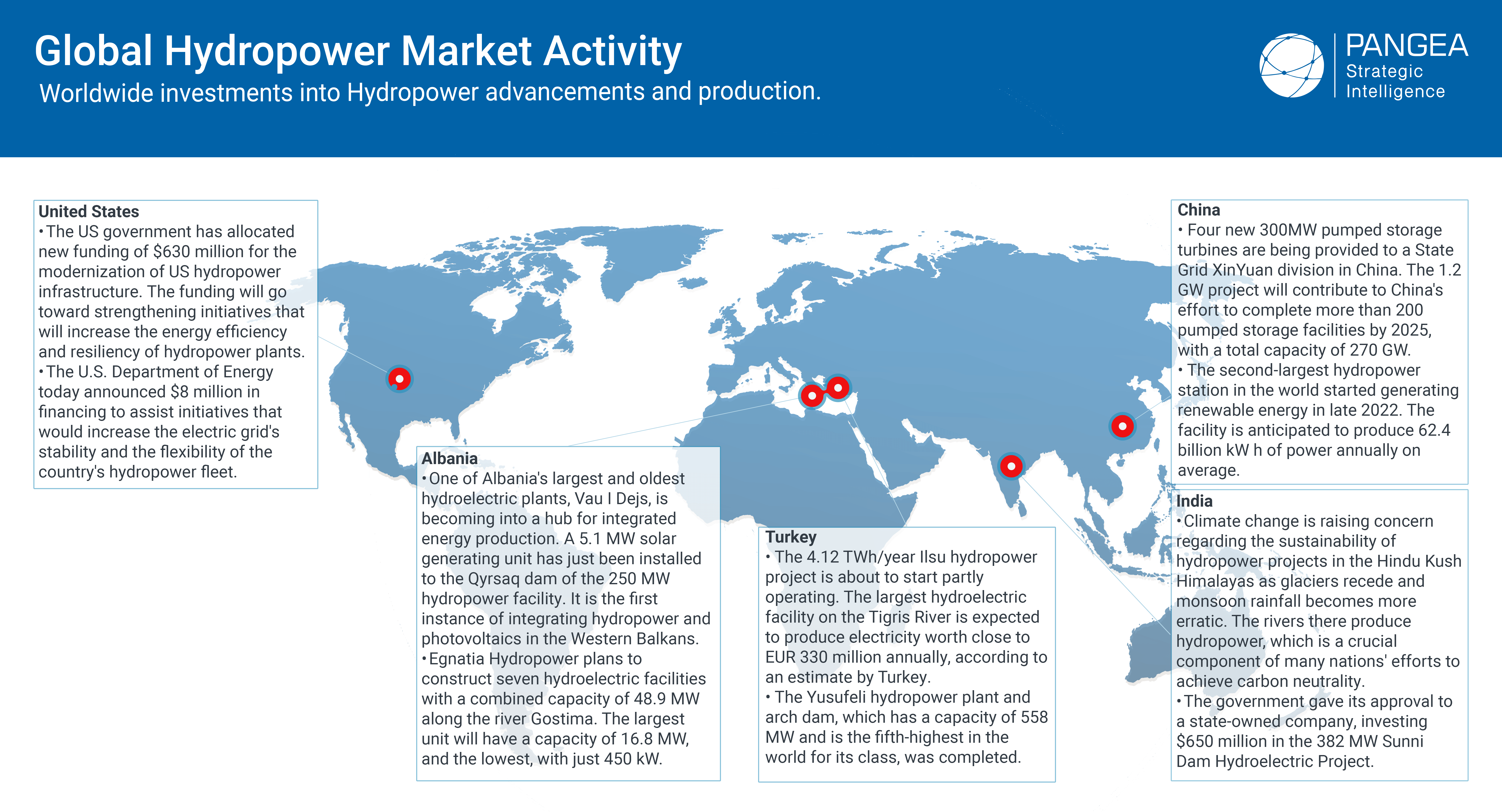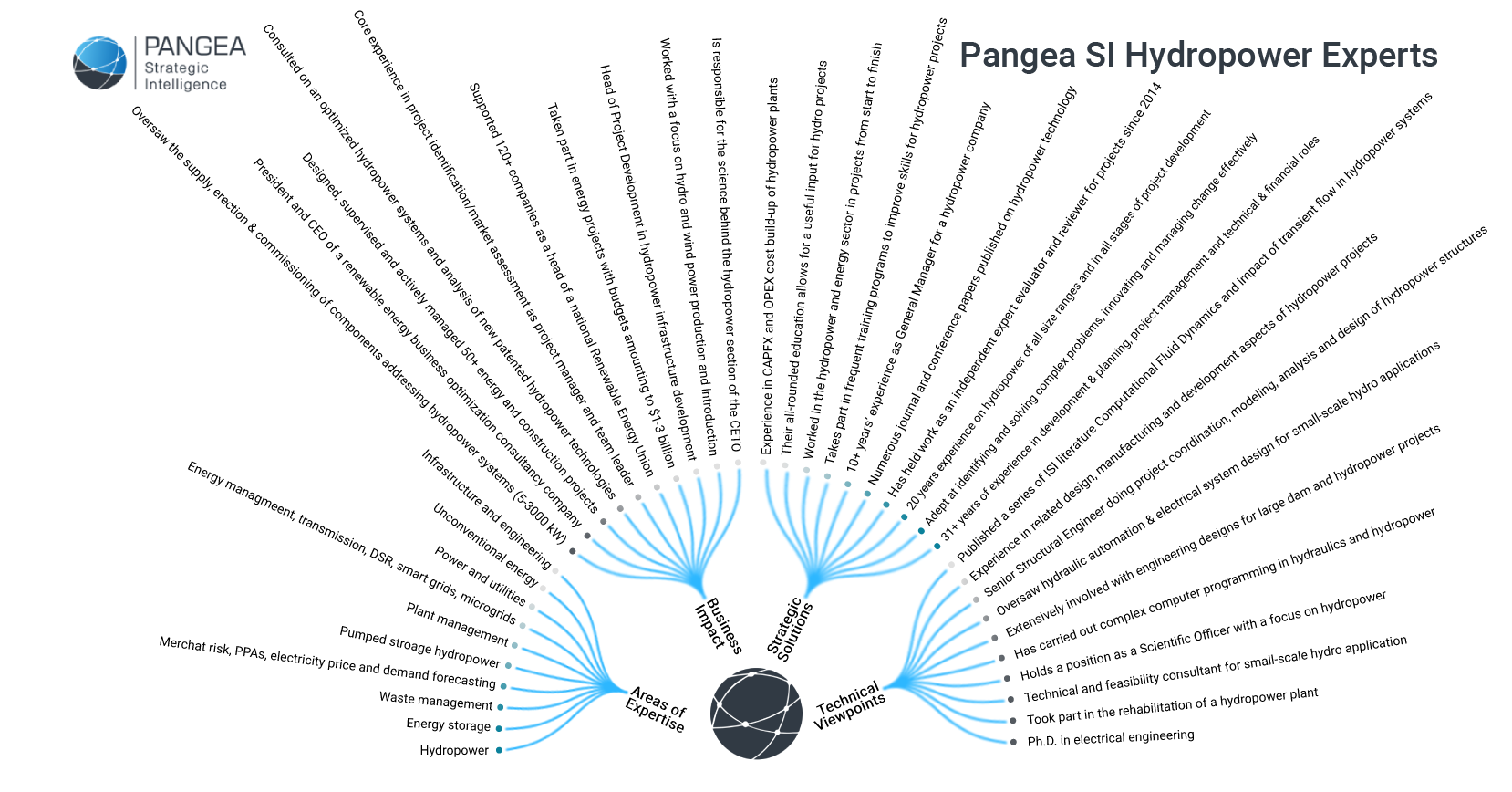Hydropower benefits the communities that it serves in a number of ways. By offering important power, storage, and flexibility services, hydropower and pumped storage continue to be instrumental in our fight against climate change. The advantages of hydropower are outlined below as the US moves toward 100% clean electricity by 2035 and net-zero emissions by 2050.
• Hydropower is a renewable energy source since it depends on the water cycle, which is fuelled by sunlight.
• Hydropower is a clean source of energy because it is powered by water.
• As a home energy source, hydroelectricity enables each state to generate its own energy without relying on foreign fuel sources.
• Hydropower has a low cost. Compared to other energy sources, hydropower offers cheap electricity and long-term durability. Even employing pre-existing buildings like bridges, tunnels, and dams can save construction costs.
• Other renewable energy sources are complemented by hydropower. When energy demand is high, technologies like pumped storage hydropower (PSH) store energy for usage in conjunction with renewable sources like wind and solar power.
Countries are adopting hydropower more and more, because of the benefits. For instance, hydropower generates 99% of the electricity in Norway and the 22.5-gigawatt Three Gorges Dam in China is the largest hydropower facility in the world. It generates between 80 and 100 terawatt hours annually, sufficient to power between 70 million and 80 million households.
Some examples include:
| Grand Ethiopian Renaissance Dam This hydropower project is being built on the Blue Nile River in Ethiopia. When completed, it will be the largest hydroelectric power plant in Africa, with a capacity of 6,450 MW. |
Three Gorges Dam Located on the Yangtze River in China, the Three Gorges Dam is the largest hydroelectric power plant in the world, with a capacity of 22,500 MW. |
| Itaipu Dam This dam is located on the border between Brazil and Paraguay and is the second largest hydroelectric power plant in the world, with a capacity of 14,000 MW. |
Hoover Dam Located on the Colorado River in the United States, the Hoover Dam is a well-known hydroelectric power plant with a capacity of 2,080 MW. |
| Belo Monte Dam This dam is being built on the Xingu River in Brazil, and when completed, it will have a capacity of 11,000 MW. |
There are several limitations to hydropower as a source of energy:
Infrastructure: Building large hydropower plants, such as dams, can be costly and time-consuming. In addition, these projects often require the construction of roads, transmission lines, and other infrastructure, which can have negative impacts on the environment and local communities.
Environmental impacts: Dams can have negative impacts on the environment, such as disrupting the natural flow of rivers and affecting the habitats of fish and other wildlife. In addition, the construction of large hydropower plants can cause erosion and landslides.
Dependence on water levels: The amount of electricity that can be generated by a hydropower plant is directly related to the amount of water available. During times of drought or low water levels, hydropower plants may not be able to generate as much electricity as they normally would.
Intermittency: Hydropower is not a constant source of energy, as the water cycle is not always consistent. This means that hydropower plants may not be able to generate electricity at all times.
Limited potential: While hydropower is a significant source of electricity in many countries, it has limited potential for expansion in many regions. There are only a limited number of suitable locations for large hydropower projects, and many of these have already been developed.
Overall, while hydropower is a valuable source of clean, renewable energy, it is important to carefully consider any hydropower project’s potential impacts and limitations.
Modernizing the current hydroelectric infrastructure might boost output, make up for some drought-related losses, and guarantee that the plants can run for many years to come.
Globally, $127 billion will be spent on updating outdated plants between now and 2030. This amounts to about one-fourth of all hydropower investments made worldwide and almost 90% of those made in Europe and North America.
This involved upgrading some of the turbines at Hoover Dam to function more effectively at lower elevations, installing thinner wicket gates to restrict the flow of water into the turbines, and inflating the turbines with compressed air to boost efficiency.
However, the majority of investment is going toward new plants in other parts of the world. Over 75% of additional hydropower capacity is anticipated to come from large, state-owned projects in Asia and Africa by 2030. However, some people are concerned about the effects such projects would have on the environment.
Global hydropower growth is declining and is anticipated to decline by roughly 23% by 2030. The capacity to reverse this trend will mostly depend on expediting the permitting and regulatory procedures, as well as establishing rigorous sustainability criteria and emissions monitoring programmes that are accepted by the community. A quicker development schedule would make it easier for developers to secure power purchase agreements, encouraging investment because profits would be certain.
Overall, hydropower is a valuable source of clean, renewable energy that can help meet the growing demand for electricity worldwide. It is important to carefully consider the potential impacts of hydropower projects and to use a variety of energy sources to create a more sustainable and resilient energy system. Whilst hydropower has many benefits, we must consider the disadvantages and come to an accurate decision when deciding to choose hydropower.

More Confident Investment Decision Making
Expect to make truly informed, risk-reduced decisions. 100% of our clients believe our platform has enabled them to “increase the speed of their early-stage research into new areas.”
Insights On Demand – in as little as 48 hours
You can access subject matter experts from anywhere in the world, whenever you need them. When technical challenges or commercial projects arise which need specific results, you can obtain valuable consulting recommendations from vetted Experts.
Commercially Effective Research
Your research capacity and capabilities are augmented through Pangea SI Experts – there is no need for hefty strategy/management consultancy retainers and you can forego the process of having to hire someone full time.

Clients notify us that they need leading insight for their project.
We engage and vet subject matter Experts matched to the request at speed.
Clients consult with their shortlisted Expert(s) and obtain forward knowledge to incorporate into their strategic plans.
Clients benefit from more refined analysis and practical guidance to achieve a quantifiable business impact.